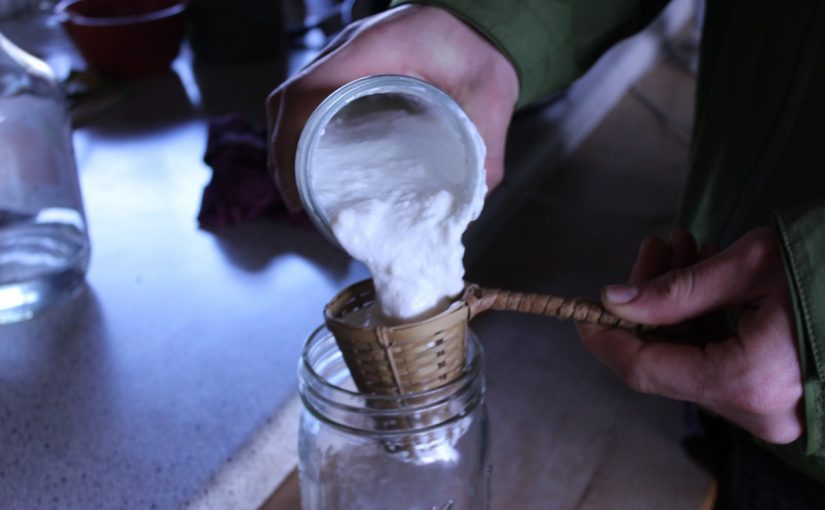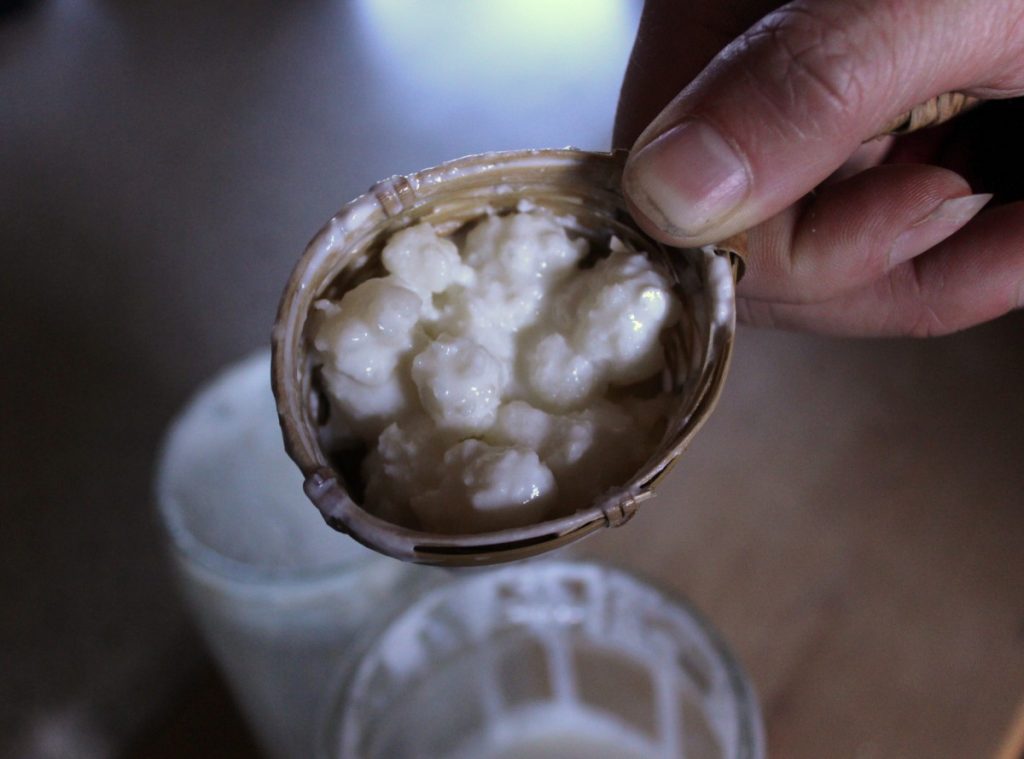Kefir translates to “the feel good beverage.” The word Kefir (kay-fear) is derived from the Turkish word kief which means “pleasure.”
No one knows where or when the kefir grain first appeared. What we do know is that dairy kefir grains originated from the Northern Caucasus Mountains region of the former USSR
This ancient fermented dairy beverage tastes similar to yogurt but has a lot more to offer and the texture is closer to a smoothie.
When you make your own dairy kefir at home, this is how it all begins
These are the kefir “grains.” They are stretchy, sticky, and gooey clumps of living cultures of yeast and lactic acid bacteria. The microorganisms in the grains multiply and ferment the sugars in the milk, turning it into the drink we know and love, kefir. I use raw goats milk. Any animal milk works, milk alternatives can work but the results will not be the same and it will not be as nutritious.
The cultures feast on the milk for 24-48 hours. The length of fermentation depends on the temperature of their home and how sour you want it to taste. The longer they ferment, the more sour it will taste. The cultures like to be in warmer temperatures, from sixty-eight to eighty degrees. If it is cooler than 68, they may need to ferment for longer.
Top Seven Health Benefits:
- Fantastic source of many nutrients including protein, calcium, phosphorous, vitamin B12, riboflavin, magnesium, and vitamin D.
- It is a powerful probiotic (the bacteria we deem beneficial) that can help with weight management, sugar addictions, mental health, and digestion.
- Kefir has been used around the world in relieving candida over growth, chronc fatigue syndrome, A.D.H.D., crhon’s, emphysema, and restoring the inner eco-system after antibiotic therapy
- Homemade Kefir can contain up to 60 different strains of probiotics and yeast-yogurt has about five
- Restores balance in the gut by colonizing unoccupied bacteria space in your gut, keeping the harmful bacteria moving along
- Kefir can improve bone health and lower the risk of osteoporosis–it increase calcium absorption.
- It is generally well tolerated by all people, even lactose intolerant. The lactic acid bacteria in fermented dairy foods turn the lactose into lactic acid.


Have you ever thought about publishing an ebook or guest authoring on other blogs?
I have a blog centered on the same subjects you discuss and would really
like to have you share some stories/information. I know my viewers
would appreciate your work. If you are even remotely interested, feel free to send
me an e-mail.